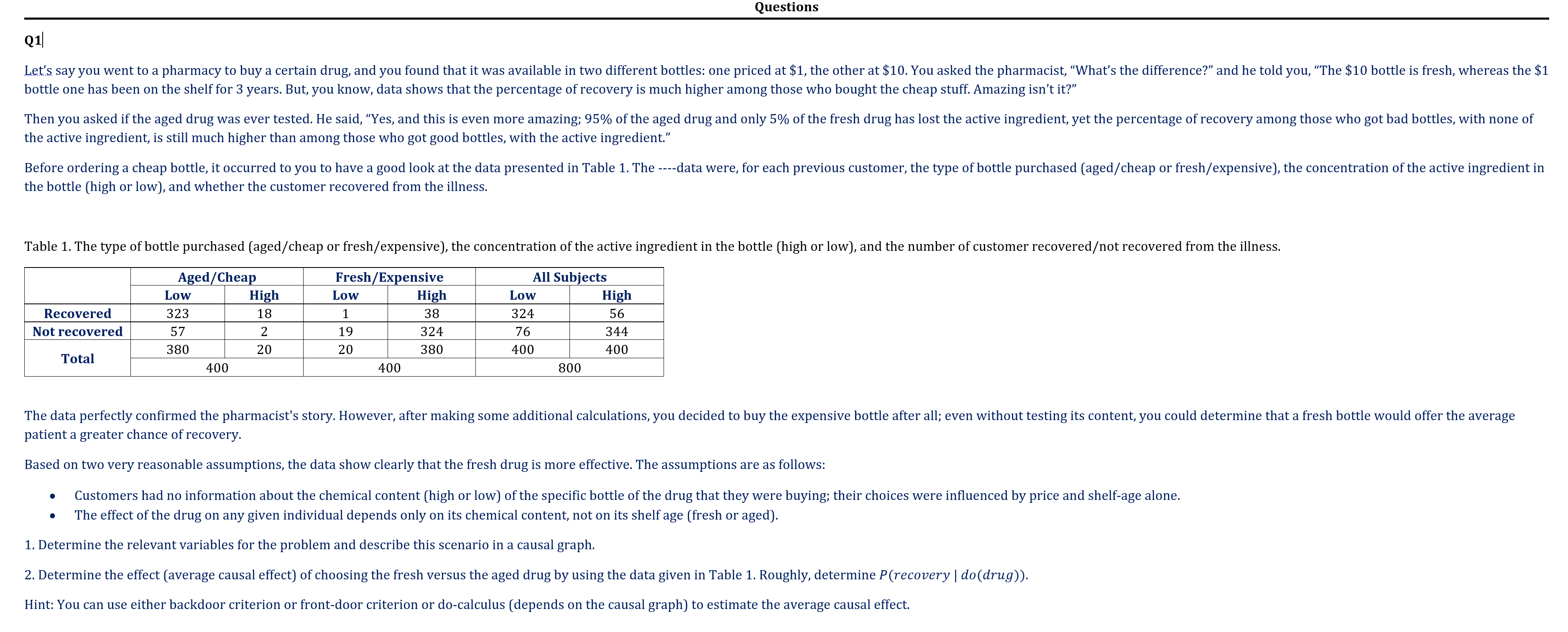Questions Qll Let's say you went to a pharmacy to buy a certain drug, and you found that it was available in two different bottles: one priced at $1, the other at $10. You asked the pharmacist, \"What's the difference?" and he told you, \"The $10 bottle is fresh, whereas the $1 bottle one has been on the shelf for 3 years. But, you know, data shows that the percentage of recovery is much higher among those who bought the cheap stuff. Amazing isn't it?\" Then you asked if the aged drug was ever tested. He said, "Yes, and this is even more amazing; 95% of the aged drug and only 5% of the fresh drug has lost the active ingredient, yet the percentage of recovery among those who got bad bottles. with none of the active ingredient, is still much higher than among those who got good bottles, with the active ingredient." Before ordering a cheap bottle, it occurred to you to have a good look at the data presented in Table 1. The --data were, for each previous customer, the type of bottle purchased (aged/cheap or fresh/expensive), the concentration of the active ingredient in the bottle [high or low], and whether the customer recovered from the illness Table 1. The type of bottle purchased [aged/cheap or fresh/ expensive), the concentration of the active ingredient in the bottle (high or low), and the number of customer recovered] not recovered from the illness. Aged/Cheap Fresh / Expensive All Subjects Low High Low High Low High Recovered 323 18 1 38 324 56 Not recovered 57 2 19 324 76 344 Total 380 20 20 380 400 400 400 400 800 The data perfectly conrmed the pharmacist's story. However. after making some additional calculations. you decided to buy the expensive bottle aer all: even without testing its content, you could determine that a fresh bottle would offer the average patient a greater chance of recovery. Based on two very reasonable assumptions. the data show clearly that the fresh drug is more effective. The assumptions are as follows: 0 Customers had no information about the chemical content (high or low) ofthe specic bottle ofthe drug that they were buying; their choices were inuenced by price and shelf-age alone. 0 The effect ofthe drug on any given individual depends only on its chemical content, not on its shelf age [fresh or aged]. 1. Determine the relevant variables for the problem and describe this scenario in a causal graph. 2. Determine the effect (average causal effect) of choosing the fresh versus the aged drug by using the data given in Table 1. Roughly, determine P(recuvery | do(drug)). Hint: You can use either backdoor criterion or frontdoor criterion or docalculus (depends on the causal graph] to estimate the average causal effect







